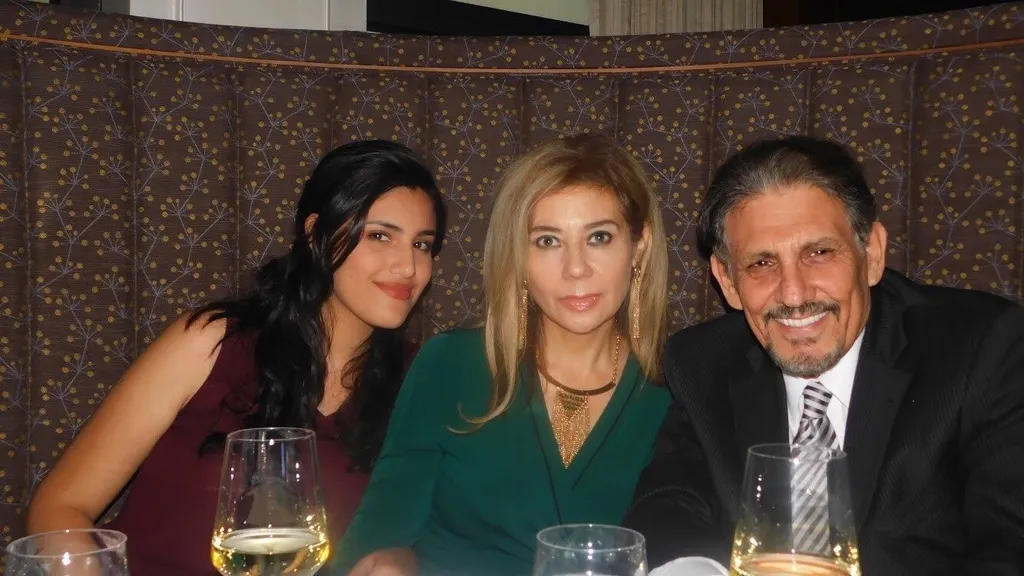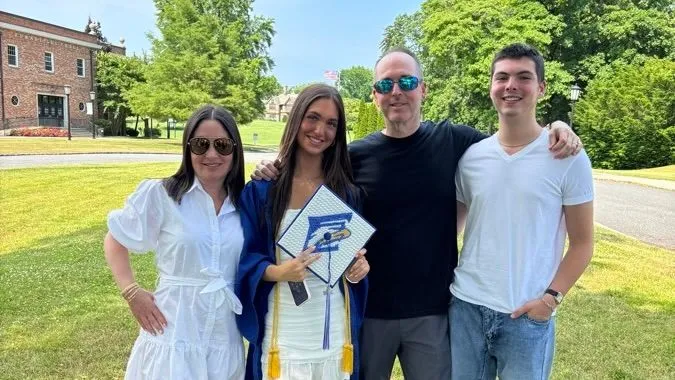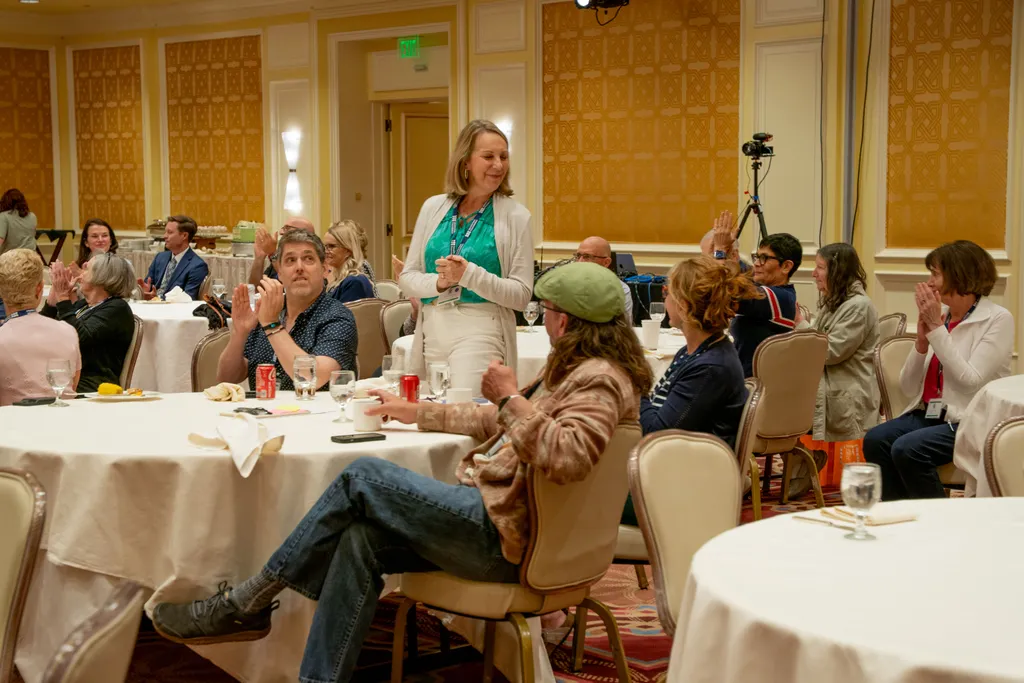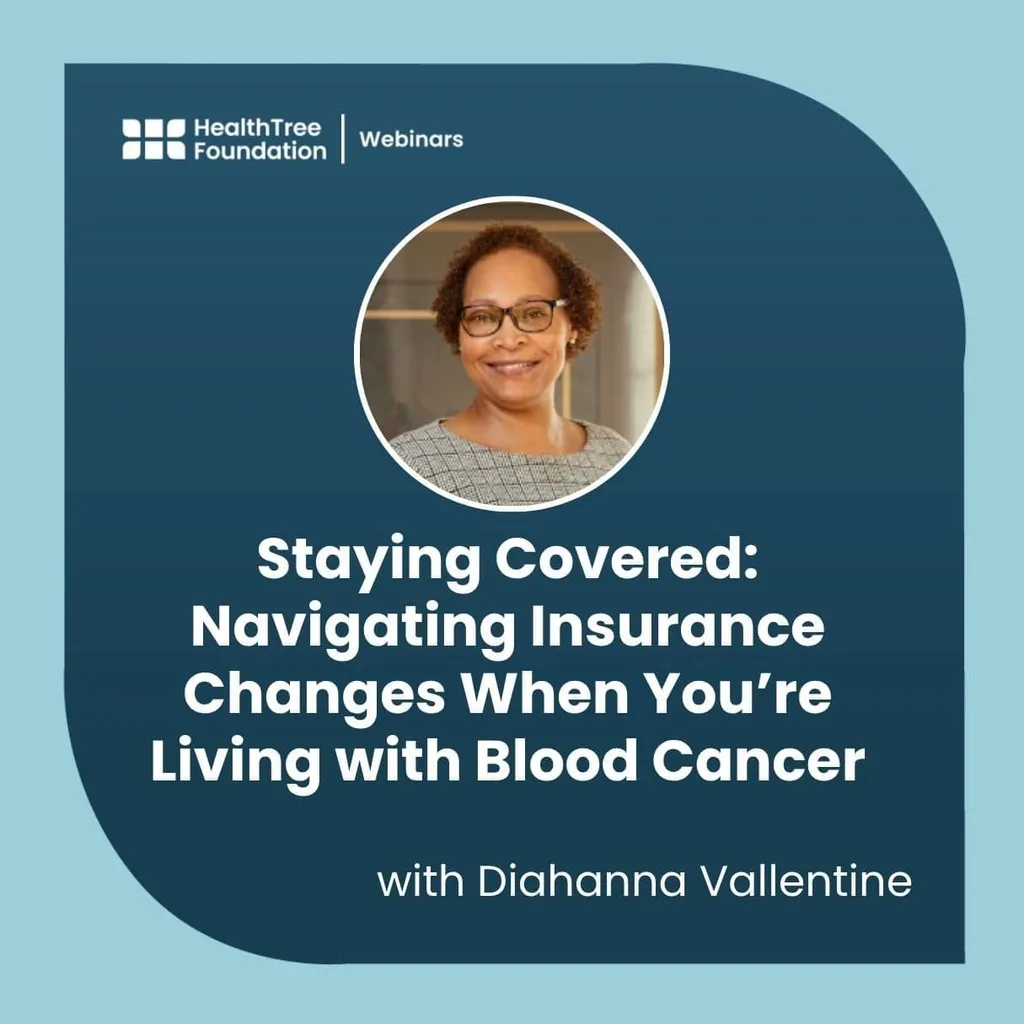Coach Kenny Capps: How Fitness Favored His Life

Who Am I?
My name is Kenny Capps. Beginning on April 1, 2018, I ran nearly 1200 miles across the state of North Carolina on the Mountains to Sea Trail in 54 days. I started at Jockey’s Ridge State Park to prove to myself that I could do it and to encourage and inspire others with cancer or chronic illness to keep moving forward.
I have cancer.
How Did I Find Myself Here?
Towards the end of 2014, I was just another middle-aged weekend athlete with marginal ability, even though I had been competing in endurance sports since I was 13 years old.
I was running 30-40 miles a week on roads and trails around Asheville. The Mount Mitchell 40-mile Challenge was scheduled for the end of February, and I was actually considering an attempt at running the Boston Marathon in 2016 if I could get my times down. At the age of 43, I would have had to run faster than 3 hours and 15 minutes, and since my most recent trail half marathon was about half that time, I felt pretty good about getting there in a road race.
Diagnosis
In October of 2014, the wheels started to come off a little bit. I thought I had the flu, so I went to my primary care doctor and he took my blood. The next day, Dr. Thrash called me and said that I did not have the flu, but my iron count was low. I was a little anemic. He told me to take some iron pills and to come back to his office to have some more blood drawn. He just wanted to make sure that I was okay.
On Christmas Eve, he called me to let me know that he got results back and explained that he wanted to send me to an oncologist, Dr. Praveen Vashist, to talk a little more.
By the middle of January, when I walked into Dr. Vashist’s office, I actually felt pretty good. My headaches had mostly gone away, and I was back to running a lot of miles on the trails in and around Asheville. But when the doctor told me I had blood cancer, my life changed. My goals changed. What I thought about the world changed.
I had cancer, and I had to figure out what to do next.
I quickly had two more opinions by leading oncologists at Emory University Hospital in Atlanta and at Duke Cancer Center, but the end result was the same. I had Multiple Myeloma, and I now had clarity on how aggressive and advanced it was. I had multiple lesions or holes through the bones in my body. That included compression fractures in my spine and lesions in my skull, scapula, collar bone and a pretty big one in my hip.
I was directed to stop running immediately (for which I cried) and I began treatment in preparation for a bone marrow transplant as soon as my body was ready. 80% of my plasma was taken up by cancer and despite my doctor's admonitions not to Google this disease, I spent many sleepless nights reading with horror and dread that I had 3 to 5 years to live. That’s one part I left out when I tried to explain the disease to my 3 kids.
Treatment
The treatment was inconvenient and a little painful at first, but mostly tolerable. But, after a couple of months, the medication made my hands shake so much that I couldn’t use the touch screens at the grocery store checkout aisles, and I had to hand my smartphone to somebody else if I wanted to respond to a text message.
In August of that year, I had a bone marrow transplant. My immune system was destroyed and reset. I spent four and a half weeks at the hospital in Atlanta, and by the time I was released, walking up or even down stairs winded me to the point that I had to rest afterward.
The cancer didn't go away completely, but it was pushed back and I got a little more time. The cancer was manageable and with the permission of my healthcare overlords, by the end of the year, I started walking a little bit, jogging a little bit, and I gained strength and stamina.
Return to Running
At the end of January 2016 I ran the Hot Chocolate 10k along the French Broad River. It was the slowest 10k I have ever run and I wanted to barf afterwards. I loved every painful step.
By the end of 2016 I had run 16 races, including 4 half marathons and the Shut-in Ridge Trail Run which is an 18-mile point-to-point race with over 5,000 feet of vertical gain. I had never run slower. My training miles were half what they used to be. Every time I went into the woods, I experienced a lot more hiking than running, and I spent a lot more time doing it than I used to. Quality time not miles became my focus. The runners in the middle and back of the pack were a lot more fun than the folks up front. I was never going to be a podium guy anyways.
During my December 2016 reflection, I realized that although it had been almost 2 years since my initial diagnosis, I would not have come back as fast as I had, had I not focused so much attention on being healthy and active before I knew I was sick, during my treatment, and after the bone marrow transplant.
I frequently heard from healthcare providers that I needed to “take it easy” and “take care of myself”, without really understanding what that meant and why. I think I get it now, but that’s only because I was already doing it.

Activity and Quality of Life
I realized there was a gap when it came to addressing myeloma patients’ health and well-being. So many people with chronic and even terminal conditions don’t know what I had discovered by accident - in order to have the best life - truly, the best life - you have to keep moving forward.
The reality is, that staying healthy and active contributes to increased quality of life. Purposeful physical activity allows for increased:
- Strength
- Endurance
- Pain tolerance
- Energy level
- Maximizing the return that you can get from your treatment, and
- Psychological benefit of just doing something - even if it's just to RAGE
I knew that my experience with cancer, coaching and training was a platform - a springboard to not only inspire, or lead by example, but also a way to pay it forward. I founded Throwing Bones for a Cure, to encourage, inspire, and activate patients suffering from multiple myeloma, other cancers, and all chronic illnesses to stay healthy and active during and after treatment.
To really motivate patients, I needed to get everyone’s attention. I wanted to do something big for others and, selfishly, because I needed to feel like I wasn’t just dying anymore. I wanted to show myself and everyone that I could convince to watch, that big things are possible even when we feel our worst.
Instead of saying “why me?”, I said “what am I learning?” and “how can I help others going through this?”
The Mountains to Sea Trail stretches from the highest sand dune, known as Jockey’s Ridge on North Carolina’s Outer Banks to Clingman’s Dome, nearly 1200 miles away in the mountains separating North Carolina and Tennessee at an elevation of 6,643 feet.
Roots, rocks, dirt and focused time. This seemed like the perfect exclamation point on whatever it was that I was trying to scream.
About the Author:
Kenny Capps is the Executive Director for Throwing Bones, whose mission is to encourage all blood cancer patients to stay healthy and active through treatment. He is a busy father of three children, ages 19, 15, and 6. He advocates for all individuals living with blood cancers, and wants to encourage them all to keep moving forward. Every day is another opportunity to take a step. He believes that being active is one of the ways to stay ahead of life and to enjoy it more.
He also volunteers as a Myeloma Coach sharing his personal knowledge and experience with myeloma to help others.
become or find a myeloma coach
Join the HealthTree Moves for myeloma fitness challenge during March Myeloma Awareness month. You can learn more and join the challenge here. Use our new fitness app, HealthTree Moves to make and track your fitness goals and experience the motivation that comes from joining in the community.
Who Am I?
My name is Kenny Capps. Beginning on April 1, 2018, I ran nearly 1200 miles across the state of North Carolina on the Mountains to Sea Trail in 54 days. I started at Jockey’s Ridge State Park to prove to myself that I could do it and to encourage and inspire others with cancer or chronic illness to keep moving forward.
I have cancer.
How Did I Find Myself Here?
Towards the end of 2014, I was just another middle-aged weekend athlete with marginal ability, even though I had been competing in endurance sports since I was 13 years old.
I was running 30-40 miles a week on roads and trails around Asheville. The Mount Mitchell 40-mile Challenge was scheduled for the end of February, and I was actually considering an attempt at running the Boston Marathon in 2016 if I could get my times down. At the age of 43, I would have had to run faster than 3 hours and 15 minutes, and since my most recent trail half marathon was about half that time, I felt pretty good about getting there in a road race.
Diagnosis
In October of 2014, the wheels started to come off a little bit. I thought I had the flu, so I went to my primary care doctor and he took my blood. The next day, Dr. Thrash called me and said that I did not have the flu, but my iron count was low. I was a little anemic. He told me to take some iron pills and to come back to his office to have some more blood drawn. He just wanted to make sure that I was okay.
On Christmas Eve, he called me to let me know that he got results back and explained that he wanted to send me to an oncologist, Dr. Praveen Vashist, to talk a little more.
By the middle of January, when I walked into Dr. Vashist’s office, I actually felt pretty good. My headaches had mostly gone away, and I was back to running a lot of miles on the trails in and around Asheville. But when the doctor told me I had blood cancer, my life changed. My goals changed. What I thought about the world changed.
I had cancer, and I had to figure out what to do next.
I quickly had two more opinions by leading oncologists at Emory University Hospital in Atlanta and at Duke Cancer Center, but the end result was the same. I had Multiple Myeloma, and I now had clarity on how aggressive and advanced it was. I had multiple lesions or holes through the bones in my body. That included compression fractures in my spine and lesions in my skull, scapula, collar bone and a pretty big one in my hip.
I was directed to stop running immediately (for which I cried) and I began treatment in preparation for a bone marrow transplant as soon as my body was ready. 80% of my plasma was taken up by cancer and despite my doctor's admonitions not to Google this disease, I spent many sleepless nights reading with horror and dread that I had 3 to 5 years to live. That’s one part I left out when I tried to explain the disease to my 3 kids.
Treatment
The treatment was inconvenient and a little painful at first, but mostly tolerable. But, after a couple of months, the medication made my hands shake so much that I couldn’t use the touch screens at the grocery store checkout aisles, and I had to hand my smartphone to somebody else if I wanted to respond to a text message.
In August of that year, I had a bone marrow transplant. My immune system was destroyed and reset. I spent four and a half weeks at the hospital in Atlanta, and by the time I was released, walking up or even down stairs winded me to the point that I had to rest afterward.
The cancer didn't go away completely, but it was pushed back and I got a little more time. The cancer was manageable and with the permission of my healthcare overlords, by the end of the year, I started walking a little bit, jogging a little bit, and I gained strength and stamina.
Return to Running
At the end of January 2016 I ran the Hot Chocolate 10k along the French Broad River. It was the slowest 10k I have ever run and I wanted to barf afterwards. I loved every painful step.
By the end of 2016 I had run 16 races, including 4 half marathons and the Shut-in Ridge Trail Run which is an 18-mile point-to-point race with over 5,000 feet of vertical gain. I had never run slower. My training miles were half what they used to be. Every time I went into the woods, I experienced a lot more hiking than running, and I spent a lot more time doing it than I used to. Quality time not miles became my focus. The runners in the middle and back of the pack were a lot more fun than the folks up front. I was never going to be a podium guy anyways.
During my December 2016 reflection, I realized that although it had been almost 2 years since my initial diagnosis, I would not have come back as fast as I had, had I not focused so much attention on being healthy and active before I knew I was sick, during my treatment, and after the bone marrow transplant.
I frequently heard from healthcare providers that I needed to “take it easy” and “take care of myself”, without really understanding what that meant and why. I think I get it now, but that’s only because I was already doing it.

Activity and Quality of Life
I realized there was a gap when it came to addressing myeloma patients’ health and well-being. So many people with chronic and even terminal conditions don’t know what I had discovered by accident - in order to have the best life - truly, the best life - you have to keep moving forward.
The reality is, that staying healthy and active contributes to increased quality of life. Purposeful physical activity allows for increased:
- Strength
- Endurance
- Pain tolerance
- Energy level
- Maximizing the return that you can get from your treatment, and
- Psychological benefit of just doing something - even if it's just to RAGE
I knew that my experience with cancer, coaching and training was a platform - a springboard to not only inspire, or lead by example, but also a way to pay it forward. I founded Throwing Bones for a Cure, to encourage, inspire, and activate patients suffering from multiple myeloma, other cancers, and all chronic illnesses to stay healthy and active during and after treatment.
To really motivate patients, I needed to get everyone’s attention. I wanted to do something big for others and, selfishly, because I needed to feel like I wasn’t just dying anymore. I wanted to show myself and everyone that I could convince to watch, that big things are possible even when we feel our worst.
Instead of saying “why me?”, I said “what am I learning?” and “how can I help others going through this?”
The Mountains to Sea Trail stretches from the highest sand dune, known as Jockey’s Ridge on North Carolina’s Outer Banks to Clingman’s Dome, nearly 1200 miles away in the mountains separating North Carolina and Tennessee at an elevation of 6,643 feet.
Roots, rocks, dirt and focused time. This seemed like the perfect exclamation point on whatever it was that I was trying to scream.
About the Author:
Kenny Capps is the Executive Director for Throwing Bones, whose mission is to encourage all blood cancer patients to stay healthy and active through treatment. He is a busy father of three children, ages 19, 15, and 6. He advocates for all individuals living with blood cancers, and wants to encourage them all to keep moving forward. Every day is another opportunity to take a step. He believes that being active is one of the ways to stay ahead of life and to enjoy it more.
He also volunteers as a Myeloma Coach sharing his personal knowledge and experience with myeloma to help others.
become or find a myeloma coach
Join the HealthTree Moves for myeloma fitness challenge during March Myeloma Awareness month. You can learn more and join the challenge here. Use our new fitness app, HealthTree Moves to make and track your fitness goals and experience the motivation that comes from joining in the community.

about the author
Rozalynn Hite
Rozalynn Hite is the HealthTree Coach Director and wife of myeloma patient Richard Hite. Rozalynn is an occupational therapist and mother of three beautiful children. She is passionate about providing support, education, and resources to help others live full and active lives.
More on Patient Stories
Trending Articles
Upcoming Events




Get the Latest Multiple Myeloma Updates, Delivered to You.
By subscribing to the HealthTree newsletter, you'll receive the latest research, treatment updates, and expert insights to help you navigate your health.
















